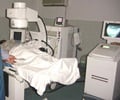Kidney infections could be treated effectively by new ways identified by the team of the Ten IU School of Medicine researchers.

According to statistics, urinary tract infections or UTIs are one of the most frequent bacteria-causing infections affecting people of all ages. UTIs become more severe kidney infections, when the bacteria ascend from the bladder to the kidney.
Kidney infections are common, occurring in 13 out of 10,000 females and 4 of 10,000 males every year. Kidney infections may cause high fevers, permanent kidney damage or even sepsis. Additional data suggests that cases of antibiotic resistant UTIs are surging, making the way for more UTIs to become the more serious kidney infections.
Specifically, the research team discovered that a type of cells within the kidney called "intercalated cells" both consume bacteria and secrete acid, which is a process - known as phagocytosis - and has historically been a capability only associated with white blood cells.
"If you were to increase white blood cell activity to treat an infection, you would affect a person's whole body.
However, since we found these cells work the same way but are only present in the kidney, the long-term potential would be the ability to activate these cells to prevent or clear an infection from the kidney," said Andrew Schwaderer, MD, professor of pediatrics at IU School of Medicine, and one of the study's senior authors. "The idea is that with this approach we will eventually be able to replace or complement antibiotic therapy."
Advertisement
The researchers initially predicted this pathway using single-cell RNA sequencing available through the IU School of Medicine's Medical Genomics Core. Utilizing normal human kidney tissue, they were able to sequence each intercalated cell individually, allowing them to tell exactly what's going on in one cell type versus the other.
Advertisement
"It was also interesting that we started with human tissue as opposed to mouse models and then went back to the mouse, said Vijay Saxena, PhD and lead author of this study. "It's a very nonbiased way to study a cellular function and a very translational approach."
Utilizing IU School of Medicine's O'Brien Imaging Center, one of only three available in the world, allowed researchers the ability to image mice in real time, delivering live results. This approach is preferable to a cell culture system which may or may not reflect what happens in the human body.
Source-Eurekalert












